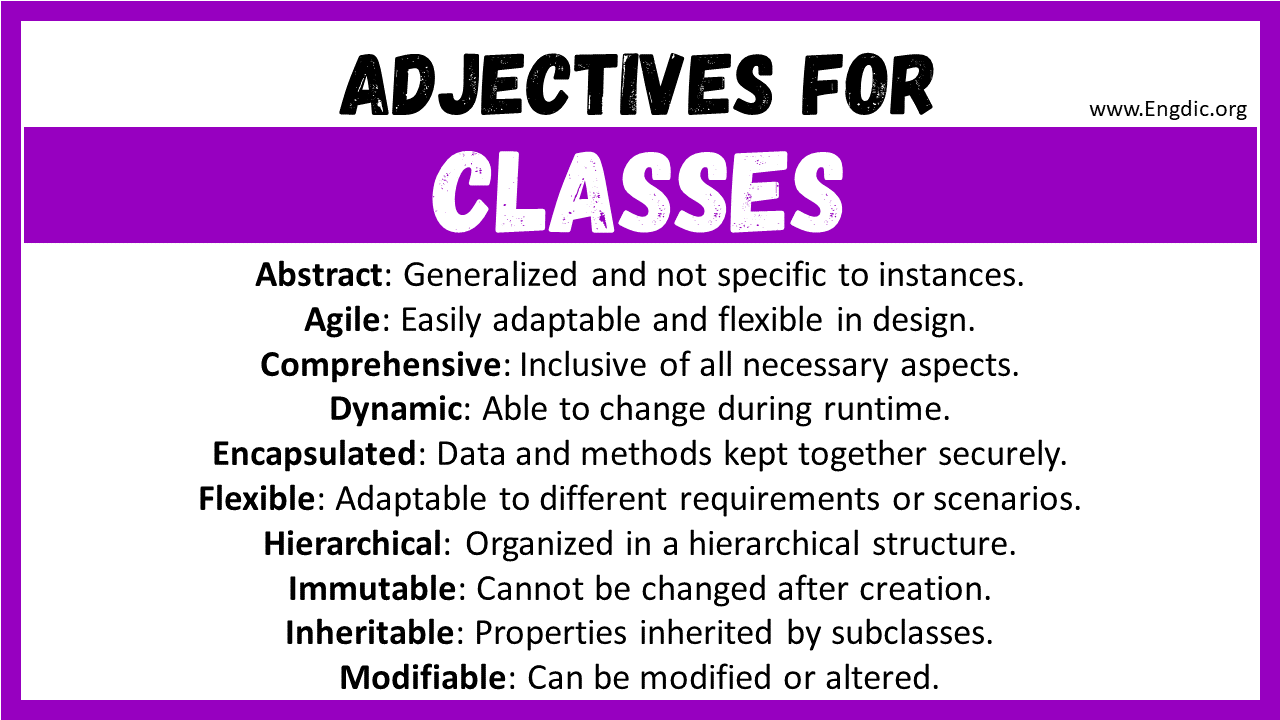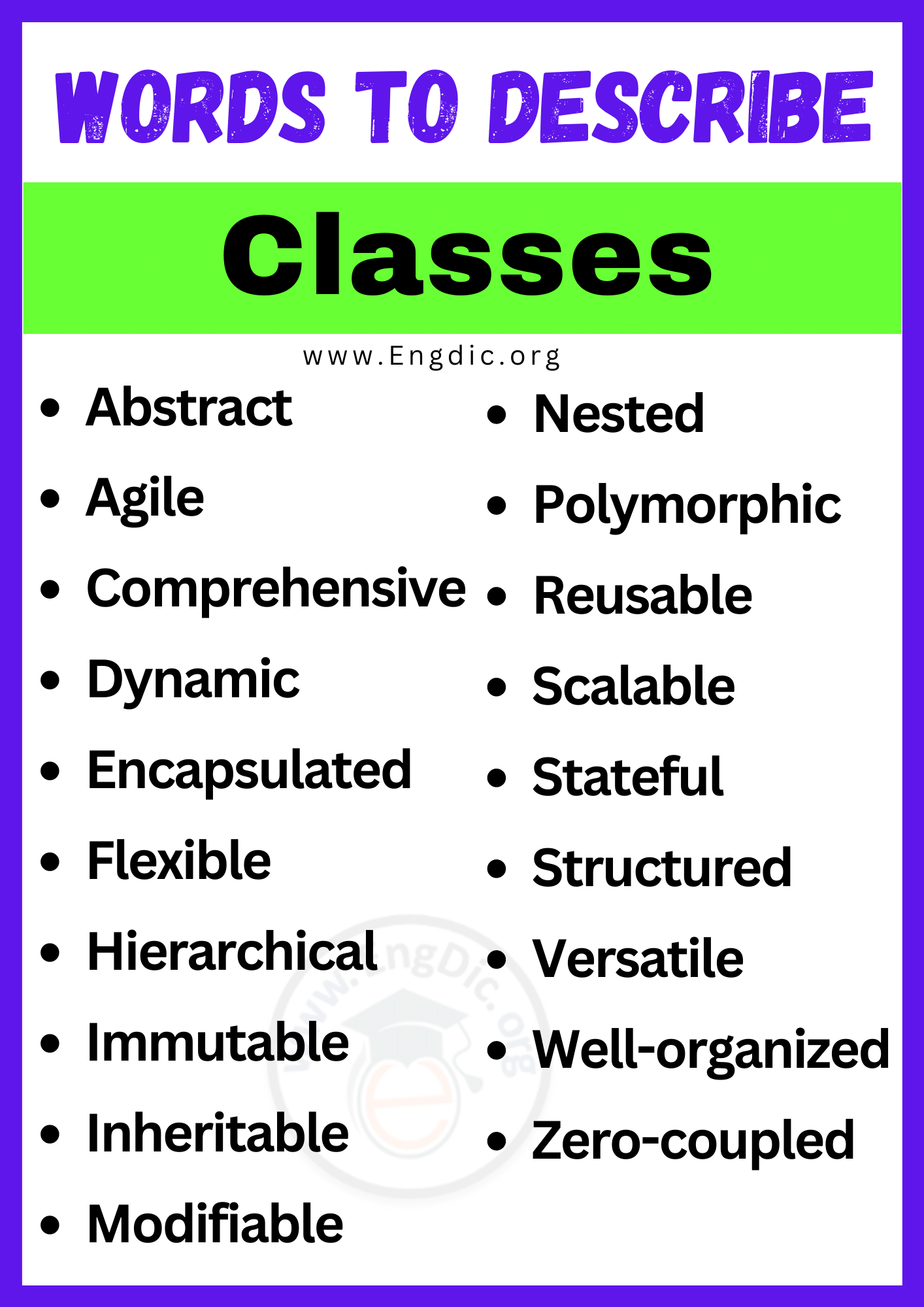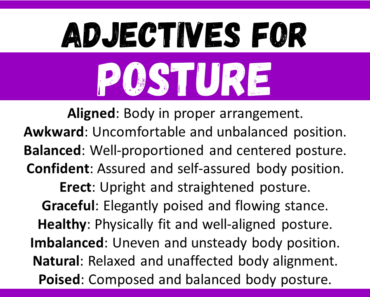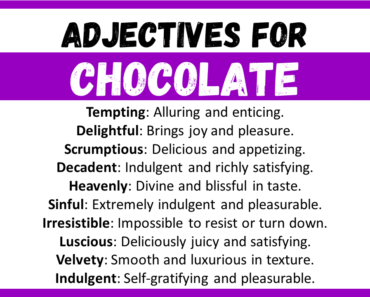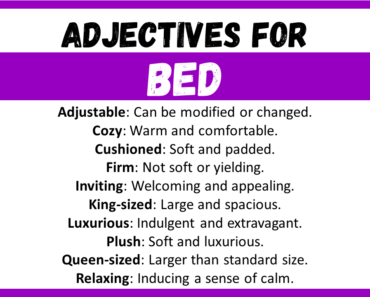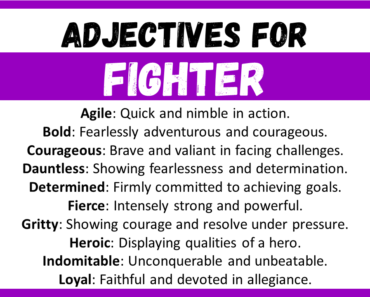In the world of programming, classes serve as fundamental building blocks that enable developers to create efficient and organized code. Simply put, classes can be thought of as blueprints or templates that define the characteristics and behaviors of objects. When we talk about “words to describe classes,” we refer to the adjectives and attributes that help us articulate the unique features, functionalities, and relationships associated with these classes. In this blog post, we’ll explore essential terms to better comprehend and communicate the essence of classes in a straightforward manner.
Adjectives for Classes
Here are the 20 Most Popular adjectives for classes:
- Abstract
- Agile
- Comprehensive
- Dynamic
- Encapsulated
- Flexible
- Hierarchical
- Immutable
- Inheritable
- Modifiable
- Nested
- Polymorphic
- Reusable
- Scalable
- Stateful
- Structured
- Template-based
- Versatile
- Well-organized
- Zero-coupled
Words to Describe Classes with Meanings
- Abstract: Generalized and not specific to instances.
- Agile: Easily adaptable and flexible in design.
- Comprehensive: Inclusive of all necessary aspects.
- Dynamic: Able to change during runtime.
- Encapsulated: Data and methods kept together securely.
- Flexible: Adaptable to different requirements or scenarios.
- Hierarchical: Organized in a hierarchical structure.
- Immutable: Cannot be changed after creation.
- Inheritable: Properties inherited by subclasses.
- Modifiable: Can be modified or altered.
- Nested: Classes within another class.
- Polymorphic: Can take multiple forms or types.
- Reusable: Can be used in multiple contexts.
- Scalable: Can be adapted to different scales.
- Stateful: Maintains data and state information.
- Structured: Well-organized and orderly.
- Template-based: Relies on predefined templates.
- Versatile: Capable of multiple applications or uses.
- Well-organized: Neatly arranged and easy to navigate.
- Zero-coupled: Minimal or no dependencies between classes.
Example Sentences for Classes Adjectives
- The abstract class provides a blueprint for objects.
- Agile development allows for flexible code changes.
- The tutorial covers a comprehensive range of topics.
- The dynamic interface updates in real time.
- Encapsulated classes hide implementation details from users.
- The software’s flexible design accommodates various inputs.
- The system follows a hierarchical structure of classes.
- Constants in the program are declared immutable.
- Inheritable attributes are passed down to subclasses.
- The program’s configuration is easily modifiable.
- The nested class handles specific data processing.
- Polymorphic functions can operate on multiple data types.
- This reusable module speeds up development time.
- Cloud computing is known for its scalable infrastructure.
- The game’s stateful class stores player progress.
- The code adheres to a structured coding style.
- The website design is based on a template-based approach.
- This library is versatile, supporting various file formats.
- The well-organized codebase makes it easy to maintain.
- The zero-coupled classes allow for independent development.
Explore More Words:
FAQ’s
How to describe classes in writing?
Classes in writing refer to the conceptual blueprints that define the structure and behavior of objects, facilitating organized and efficient code design.
Is classes a noun or adjective?
Classes primarily function as a noun, representing a blueprint for creating objects in object-oriented programming.
What are the characteristics of class?
Classes possess attributes like encapsulation, inheritance, and polymorphism, allowing them to define the properties and behaviors of objects within a program.
